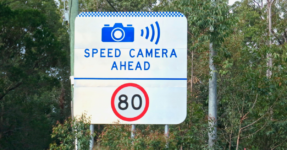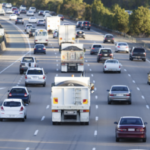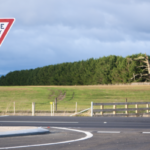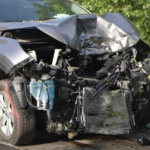New South Wales Traffic Offences: Recent Updates to Road Rules

As the pace of modern life accelerates and technology continues to shape our world, it is essential to update road rules to keep drivers safe and traffic flowing efficiently.
In Australia, a series of new road rules and regulations, including new traffic offences, have been introduced to reflect the evolving transportation landscape and enhance the overall safety of road users.
These changes are intended to accommodate for emerging technologies as well as promote safe driving practices.
Let’s take a closer look at recent updates to road rules in New South Wales.
1. Strict Enforcement of Speed Limits and Increased Penalties
Speed limits play a crucial role in road safety, and new rules have been introduced to address the issue of speeding.
Whereas the Roads and Maritime Service, or RMS, previously allowed some leeway in cases where drivers and riders exceeded the speed limit, the authority has made it clear this is no longer the case and motor vehicle users can expect to be penalised for travelling in excess of the speed limit by as little as one kilometre.
The fines that apply to speeding offences have also been increased, sending a strong signal to motorists that such conduct will lead to harsher consequences.
2. Increased Penalties for Using a Mobile Phone While Driving
Penalties have also been significantly increased for illegal mobile phone usage while driving.
The law makes it clear that drivers are prohibited from using hand-held mobile phones, including holding a phone in hand or using it for text messaging or video calling, unless the devices are securely mounted in a cradle and operated using voice commands or one-touch functions, or the driver is merely passing it to a passenger.
Provisional and Learner drivers are not permitted to use the devices at all.
3. Autonomous Vehicles
Once science fiction, autonomous and semi-autonomous vehicles are now being used on public roads in a number of countries across the globe including parts of the United States and member nations of the European Community.
Foreshadowing their introduction on our own roads, Australian authorities are in the proceeds of introducing new rules aimed at ensuring these futuristic vehicles are as safe as possible for all road users, and do not cause avoidable congestion.
Antiquated rules are in the process of being repealed and replaced by a new framework which recognises and promotes technological advancements with a view to the deployment of autonomous vehicles on our roads.
Among other things, the rules prescribe the responsibilities of manufacturers, operators, and drivers and outline protocols for emergencies and system failures.
The reforms are being hailed by authorities as an important step towards ensuring the integration of autonomous vehicles into our existing road network.
4. Electric Vehicles
While electric vehicles, or EVs, have been around for many decades, their widespread adoption have only occurred in the last decade or so, owing primarily to technological advancements in battery life and design, as well as effective marketing and government incentives and subsidies.
The proliferation of charging stations has also been a factor, but owners are often left frustrated by owners of combustion engine vehicles parking in designated EV spots, and even on occasion in charging spots.
This has led to the enactment of regulations against such conduct, with parking in a designated EV parking or charging area now being punishable by a fine of $129 and two demerit points, or up to $2,200 if the matter comes before a court and the motorist pleads guilty or is found guilty.
5. Cyclist Safety
With cycling’s rising popularity as a mode of transportation, road rules have been updated to enhance cyclist safety. Motorists must maintain a safe distance when passing cyclists on the road, and a minimum passing distance rule has been introduced to protect vulnerable road users.
The safe distance rule stipulates that motorists must leave a one metre gap between their vehicle and cyclists travelling in the same direction, or 1.5 metres when the motor vehicle is travelling faster than 60km/h.
Breaking this rule can result in a fine of $349 and two demerit points, with the maximum increasing to $2,200 if an election is made to bring the matter before a court and an adverse outcome is the result.
In addition to this, cyclists no longer need to hug the left-hand shoulder to provide space for vehicles to take up the lane. Now, they can take up the whole lane as a singular vehicle.
Authorities are at the same time campaigning to ensure cyclists use designated bicycle lanes where available, and adhere to traffic signals and road rules.
6. Pedestrian Safety
Enhancing pedestrian safety is a priority in updates to the road rules, with penalties being increased for failing to slow down when approaching, and give way at, a pedestrian crossing being increased.
The penalty for failing to give way at a pedestrian crossing is now a fine of $387 plus 3 demerit points, and the maximum fine that can be imposed by a court is $2,200.
7. Child Restraints
Parents and carers are now legally permitted to use modified and non-standard restraints in vehicles to adequately accommodate for those with disabilities.
However, those who propose to use non-standard restraints must obtain a certificate from a certified medical practitioner submit their vehicle for inspection.
8. Give Way to Those Doing a U-Turn
Drivers entering a road and making a U-turn were previously required to give way to one another. Now, drivers on the road have the right of way over the drivers entering from a side road or road-related area.
Similarly, drivers are prohibited from doing a U-turn at crossing areas, such as children’s crossings, school crossings, foot crossings, and car park exits.
9. Properly Adjusted and Fastened Seat Belt
And lastly, amendments to the road rules seek to clear confusion regarding how to adjust and fasten a seatbelt for the driver, front seat passenger and back seat passengers.
The rules now make clear that a seatbelt is considered to be fastened if when the buckle with the lap portion is over the driver’s hips, and the diagonal section of the belt is over the driver’s shoulder, not under their arm or behind their body.
The same goes for the front passenger and back passengers by the windows, while the rear middle passenger is permitted to have the belt over their lap only.
The evolving nature of transportation and the growing complexity of road networks necessitate periodic updates to road rules to ensure the safety and efficiency of all road users.
New South Wales authorities says the recent changes to road rules go a considerable way towards accommodating for emerging challenges and promoting responsible driving practices.
By staying informed and adhering to the rules, drivers can create a safer and more secure road environment for everyone, and avert the penalties that can flow from breaking the rules.






